Instruction
In this topic you will learn how to carry out a hearing screen using audiometry.
Hearing screen
An audiometer checks if a child can hear a sound at three different frequencies:
- 1000 Hz
- 2000 Hz
- 4000 Hz.
The loudness of the sound is set at 20 decibels (dB) to see how well the child can hear each frequency.
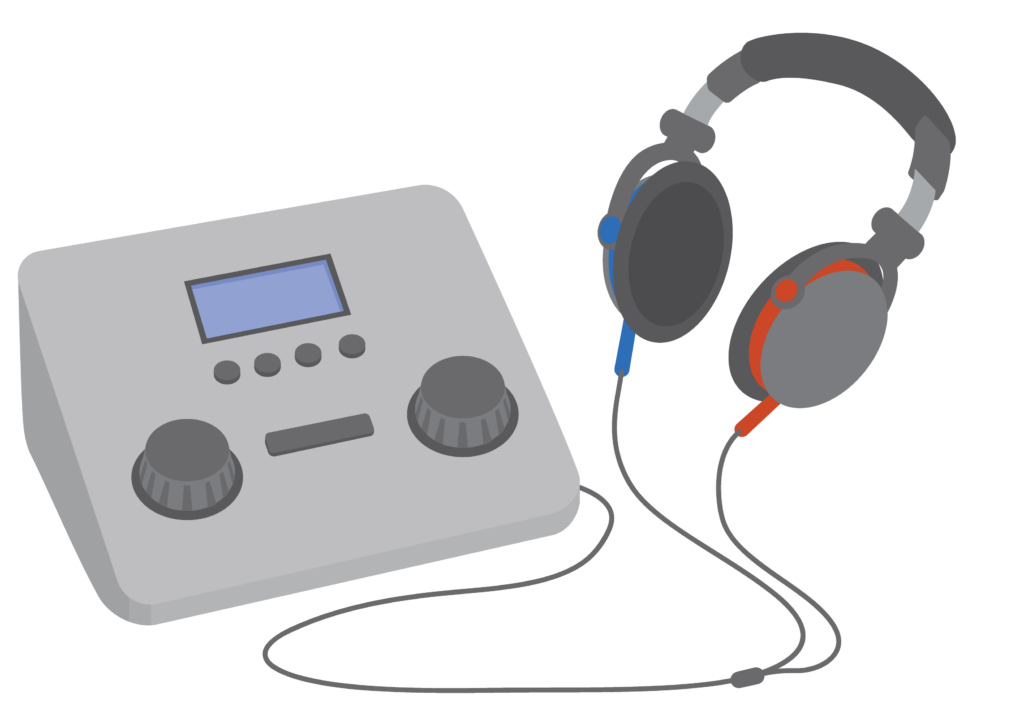
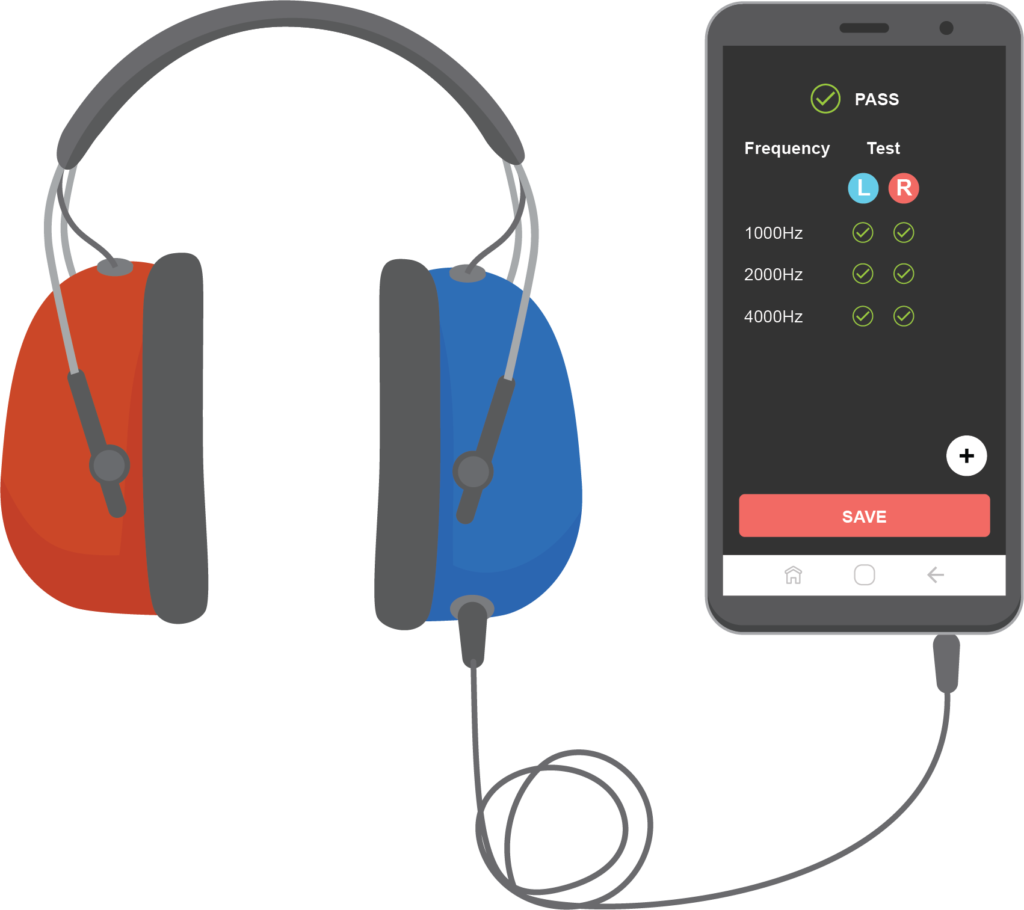
Explain the hearing screen
Explain to the child that you will be making sounds or ‘beeps’ with the machine/phone, which will come through the headphones.
Instruct the child to:
- Listen for the sound (beep)
- Raise their right or left hand to show which side they hear the sound. They should raise their hand each time they hear a sound (beep).
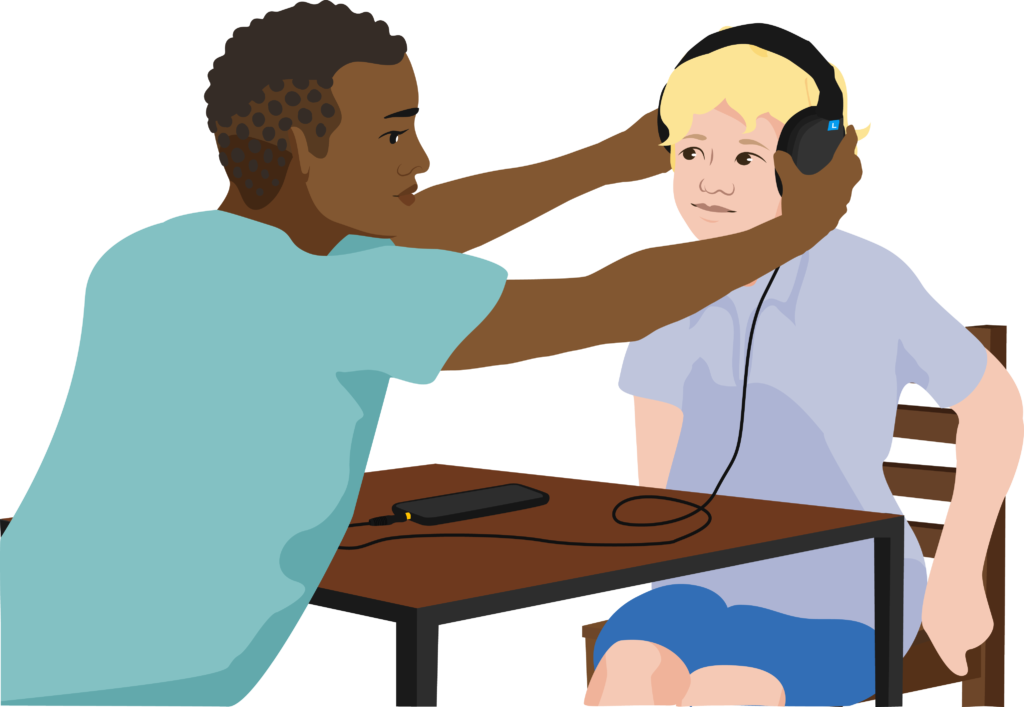
Position headphones
- Clean the headphones before using
- Check the child is happy for you to place the headphones on their ears
- Make sure the headphones are comfortable and cover their whole ear on both sides.
Practice hearing screen
Practice the screen to make sure the child understands. Practice with each ear.
- Set the sound frequency at 1000 Hz, and the loudness at 40 dB
- Give a sound (beep) into the child’s right ear
- Check the child raises their right hand. If the child does not respond, repeat up to three times.
If the child responds, select Yes Continue to their left ear.
If the child does not respond after three attempts, select No Continue to ear health screen.
Instruction
If Yes to both right and left ears select Pass.
If No to any Refer. Stop the hearing screen and Continue to ear health screen.
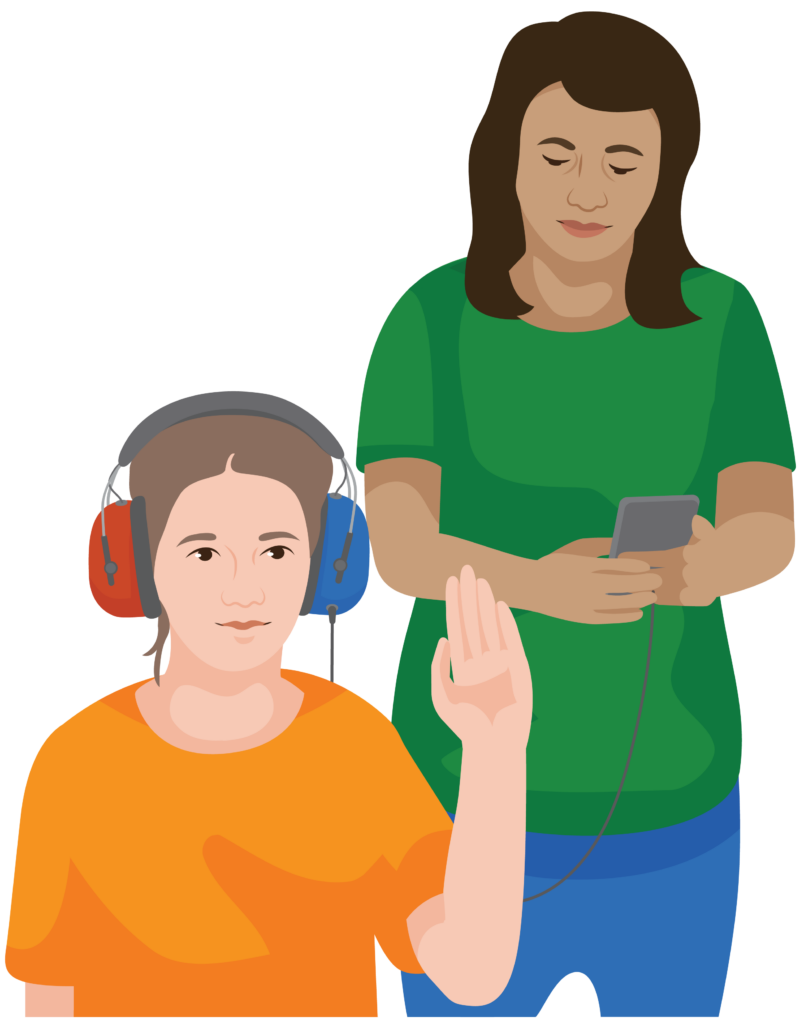
Tip
If the child cannot raise their hand, they can signal in a different way.
Instruction
If the child is unable to understand/carry out the instructions or accept wearing the headphones, do not continue with the hearing screen.
Select Refer Continue to the ear health screen.
Question
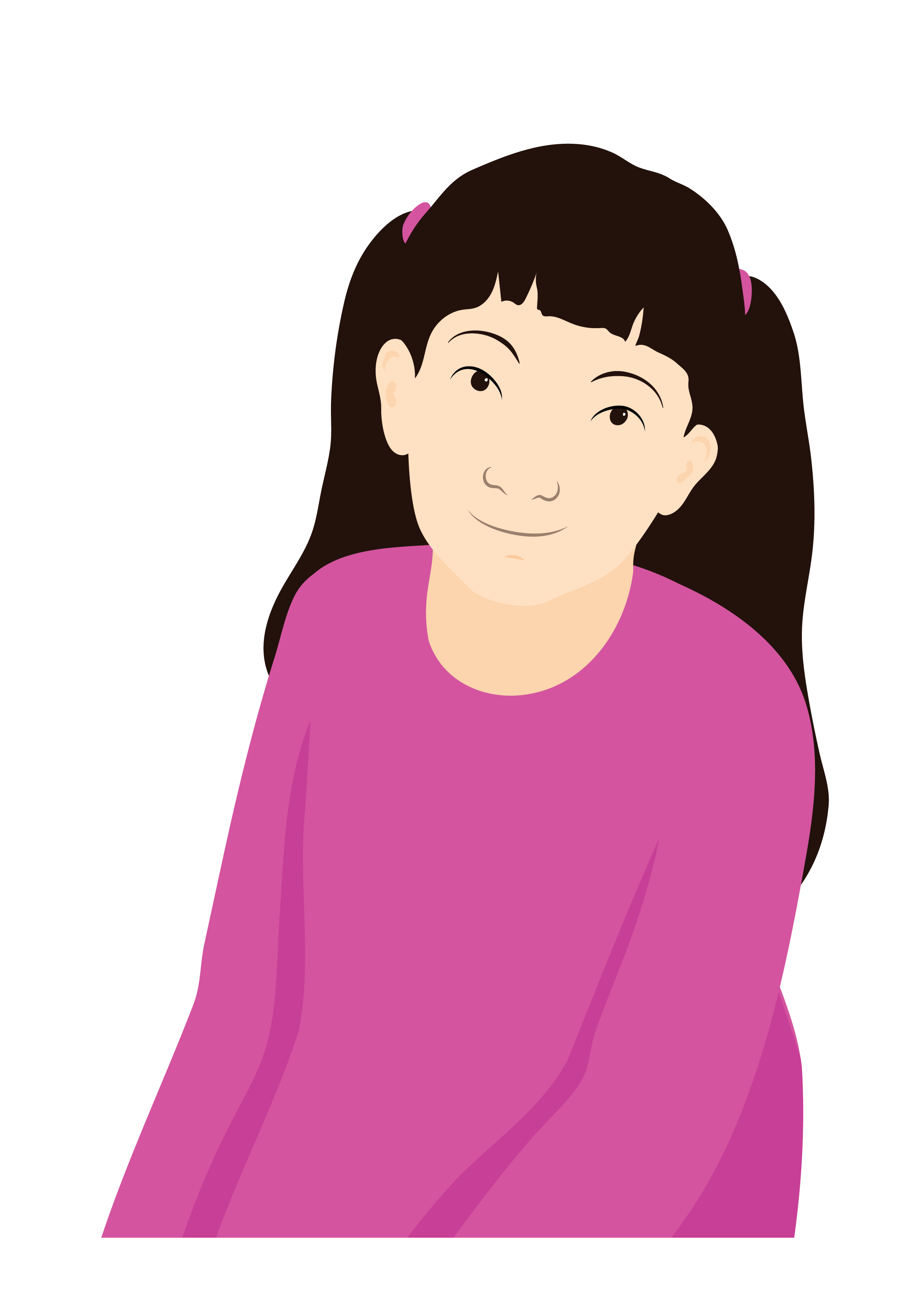
Meet Sakura
Sakura is 11 years old and lives with her parents. She has cerebral palsy. Sakura participated in her school sensory screening programme.
When she did the hearing screen practice (1000 Hz at 40 dB) the screener recorded:

What overall result would you record for the practice screen?
Refer is correct!
Sakura did not have Yes for both ears. You would Refer Sakura to ear care personnel when you have completed the ear health screen.

Full hearing screen
If the child passes the practice hearing screen continue to complete a full screen of both ears.
Start with the right ear. Screen the right ear at all three frequencies before screening the left ear.
1. 1000 Hz at 20 dB
- Keep the frequency level at 1000 Hz and turn down the loudness to 20 dB
- Give this sound in the child’s right ear three times
- Record the result for each sound
✓ Tick if the child hears 20 dB sound
✗ Cross if the child does not hear 20 dB sound.
2. 2000 Hz at 20 dB
- Increase the frequency level to 2000 Hz and keep the loudness at 20 dB
- Give this sound in the child’s right ear three times
- Record the result for each sound.
3. 4000 Hz at 20 dB
- Increase the frequency level to 4000 Hz and keep the loudness at 20 dB
- Give this sound in the child’s right ear three times
- Record the result for each sound.
Repeat for the left ear.
Instruction
If there are two or more ticks for each frequency for both ears, select Pass.
If there are less than two ticks for any frequency for either ear, select Refer.
Question
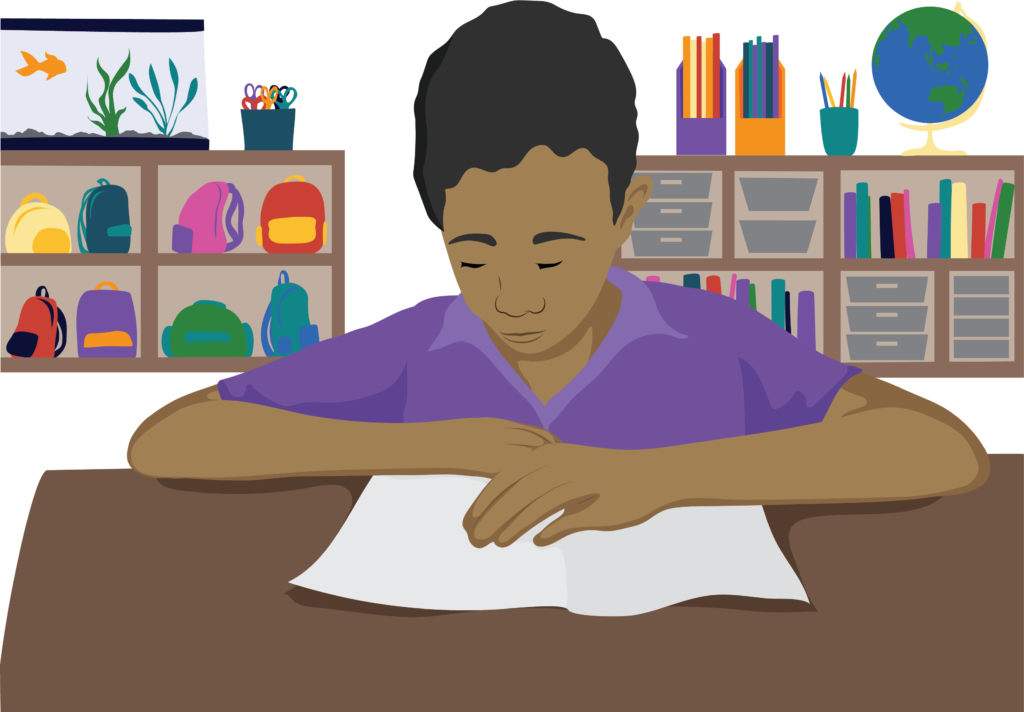
Meet Do Yoon
Look at the results of Do Yoon’s hearing screen:

What action would you do next?
Incorrect.
Do Yoon has less than two ticks at 4000 Hz for his left ear. He must have two or more ticks for each frequency for both ears to Pass.
Incorrect.
It is important to record the overall result of Do Yoon’s hearing screen before continuing to the ear health check.
Correct!
Do Yoon does not have two or more ticks for each frequency for both ears. You would select Refer and continue to complete the ear health check.
Instruction
Watch the video of a hearing screen.
Question
Where was the screener positioned in the video when carrying out the full hearing screen?
Select one.
If you selected c, you are correct!
The screener stood behind the child in the video. It is important that the child cannot see your hand when doing the full screen. You can position yourself behind or at the side of the child.
Activity
In groups practice a full hearing screen.
You will need:
- Audiometer
- Noise cancelling headphones
- Screen form and pen.
Practice:
- Set up
- Explain
- Position headphones
- Practice screen and record results
- Full screen and record results.